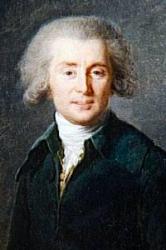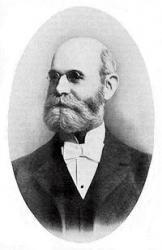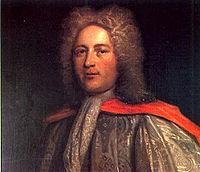
1741 - 1813 Person Name: André Grétry, 1741-1813 Composer of "LANDÅS" in Community of Christ Sings Andre Ernest Modeste Gretry Belgium/France 1741-1813. Born at Liege, Belgium, his father was a poor musician. He was a choirboy at the Church of St. Denis in Liege. He studied under Jean-pantaleon Leclerc and later organist Nicolas Rennekin for keyboard and composition. He then studied under music master, Henri Moreau, at the collegiate church of St. Paul. He attended Italian opera performances by various masters and became interested in furthering his studies in Italy. He was financed to attend the College of Liege in Rome for five years, studying under Giovanni Battista Casali. He married painter, Jeanne-Marie Grandon. He began writing operas, devoting himself to French comic opera. In 1767 he left Rome and went to Geneva, Switzerland, where he met Voltaire, and produced another operetta, then went to Paris. He was not well known, and befriended the Swedish ambassador, Gustaf Creutz, from which he attained a libretto, “Le Huron”, and set it to music in just a short time. Its performance was successful. He soon composed two more comic operas, establishing his eminence in that area. He became a French citizen. He composed some 50 operas, his best in 1771 and 1784. He was the first to include the tuba curva instrument in his operas, which gave them a distinct personality. He also used mandolins in his works. During the French Revolution he lost much of his property, but successive governments in France vied in his favor and he received rewards for his works. He was appointed Inspector of the Conservatoire, and Napoleon granted him the cross of the “Legion of Honor” and a pension. He also taught opera composition to students, including his two dauthers, Lucile and Caroline. He died at the Hermitage in Montmorency and was buried in Paris. A statue commemorating him was commissioned in 1804 by Hippolyte, comte de Livry, and placed in the Opera Comique in 1809, now in the Metropolitan Museum of Art, New York.
John Perry
André Grétry


